You are here
New Releases

UNFPA Ghana Country Office Annual Report 2018
Can you imagine a world where every pregnancy is wanted every childbirth is safe and every young person’s potential
is fulfilled? This is the critical vision that lies at the core of UNFPA’s global, regional and country efforts. As the political
and financial climate evolves, so does the nature of our work.
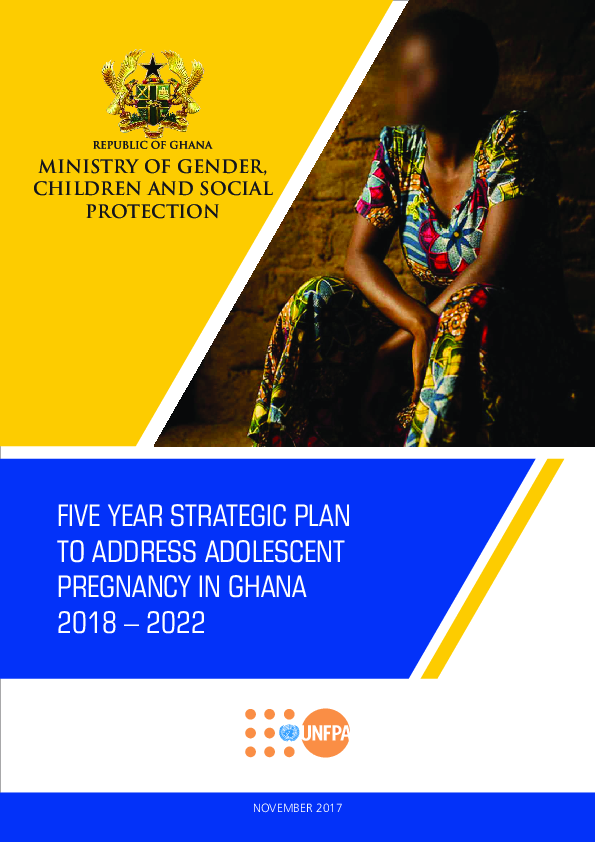
Five Year Strategic Plan to Address Adolescent Pregnancy In Ghana 2018 - 2022
The five-year strategic plan to address adolescent pregnancy is informed by several factors. Ghana's population is largely youthful with 22.4 percent of the population classified as adolescents of age 10-19 years and about 62 percent being less than 25 years as at 2010. Ghana's demographic transition also shows the onset of a demographic dividend, driven by a changing age structure characterized by a shrinking children's population and expanding economically active population, thereby also reducing the dependency burden.
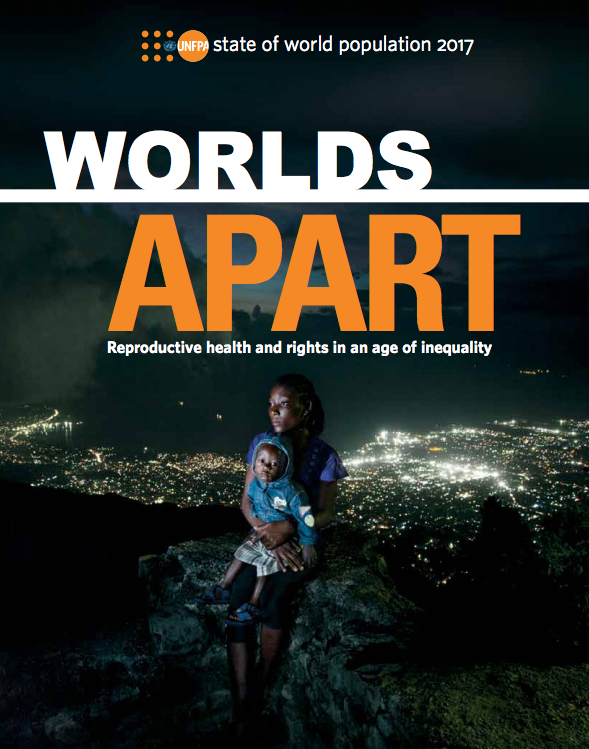
State of World Population 2017
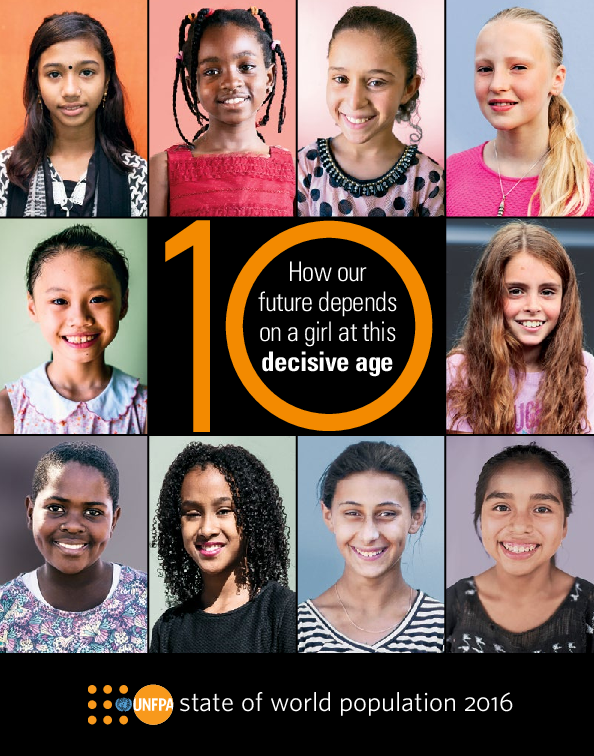
State of the World Population Report 2016
When a girl reaches age 10, her world changes. A flurry of life-changing events pulls her in many directions. Where she ends up depends on the support she receives and the power she has to shape her own future. In some parts of the world, a 10-year-old girl, on the verge of adolescence, sees limitless possibilities ahead and begins making choices that will influence her education and, later, her work and her life. But in other parts of the world, a 10-year-old girl’s horizons are limited. As she reaches puberty, a formidable combination of relatives, figures in her community, social and cultural norms, institutions and discriminatory laws block her path forward. By age 10, she may be forced to marry. She may be pulled out of school to begin a lifetime of childbearing and servitude to her husband. At 10, she may become property, a commodity that can be bought and sold.

SITUATIONAL ANALYSIS OF ADOLESCENT GIRLS AND YOUNG WOMEN IN GHANA - SYNTHESIZING DATA TO IDENTIFY AND WORK WITH THE MOST VULNERABLE YOUNG WOMEN
Adolescents and young people are entitled to decent livelihoods; however, girls face disproportionate risks and distinctive consequences related to the vulnerabilities they experience. Young girls compared to their male counterparts are more likely to drop out of school, to marry at an early age, and to bear the consequences of poor sexual and reproductive health outcomes. Adolescent girls confront distinct physical and social vulnerabilities that threaten their human rights and livelihoods. The needs and opportunities for girls’ and boys’ diverge during early adolescence, with girls entering puberty on average two years earlier than boys. For many girls in the developing world, this marks the beginning of a protracted risk period during which they have little or no control over critical social, health, and economic outcomes. Girls are disproportionately vulnerable to violations of their human rights, inadequate reproductive health services, education and subjected to child marriage - all limiting realization of their full human potential. The recognition that adolescent girls and young women face a complex array of issues led the UNFPA Country Office (CO) to initiate an in-depth situational analysis of adolescent girls and young women in Ghana. The aim of the situational analysis was to identify and work to improve the sexual and reproductive health and rights (including gender-based violence and child marriage) vulnerabilities adolescent girls and young women face.
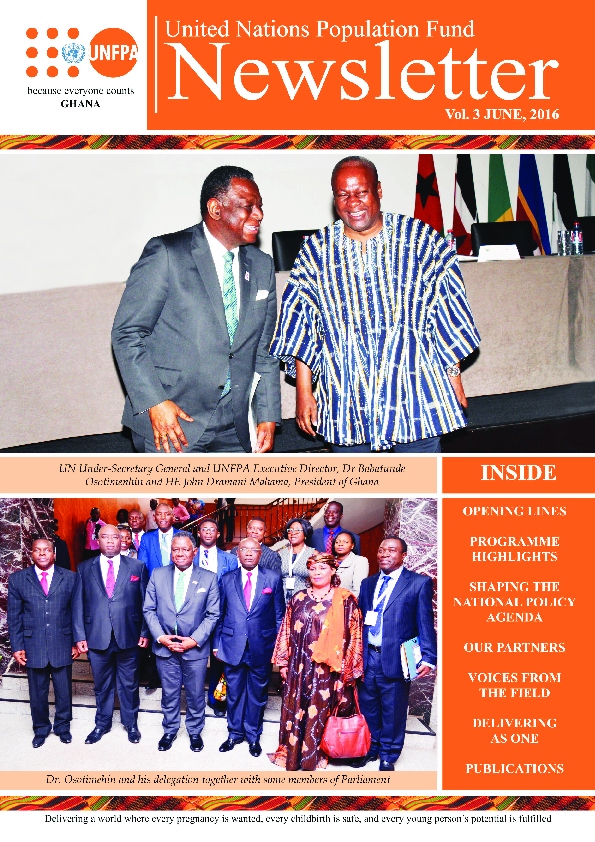
UNFPA in Ghana - Newsletter Vol. 3
Readers of this issue of the UNFPA-Ghana Newsletter will find that the stories and articles therein reinforce the point that in the context of the SDGs, advancing sexual and reproductive health and rights (SRH&R) can no longer be done in the business-as-usual mode.
They highlight ongoing efforts with our partners to do things differently and to bring some innovation even to the ostensibly tried and tested approaches like policy dialogue, capacity building, agenda setting conferences and workshops, and action-oriented stakeholder engagement.
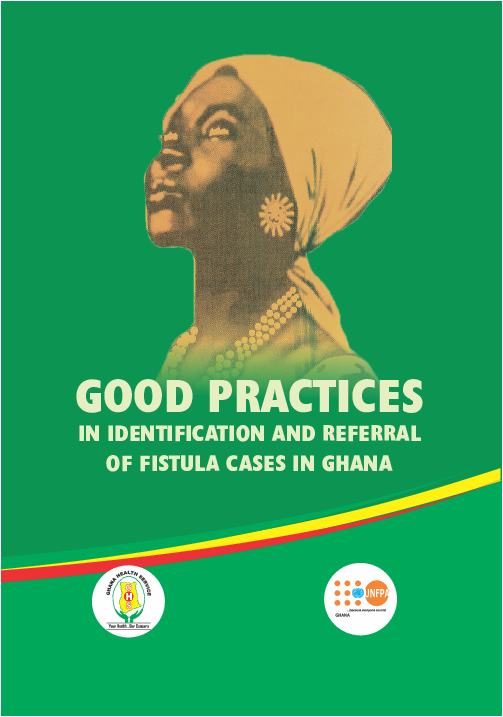
GOOD PRACTICES IN IDENTIFICATION AND REFERRAL OF FISTULA CASES IN GHANA
Obstetric Fistula (OF) can be said to be one of the most serious, tragic and devastating conditions that women suffer at childbirth. Women who suffer this condition often end up with stillbirth further
compounding their plight. Majority of these women are young, poor, illiterate and mostly live in remote areas. The World Health Organization (WHO) estimates that globally about 2 million girls and women live with fistula particularly in Africa and Asia. A 2015 report on the assessment of obstetric fistula in Ghana estimated the incidence of obstetric fistula to be between 1.6 and 1.8 per 1,000 deliveries, amounting to between 711 and 1,352 new cases per year.
Ghana Decentralized Mode of Delivery of Programme Support
Ghana Decentralized Mode of Delivery of Programme Support
Good Practices for the 5th Country Program (CP5)
Good Practices for the 5th Country Program (CP5)